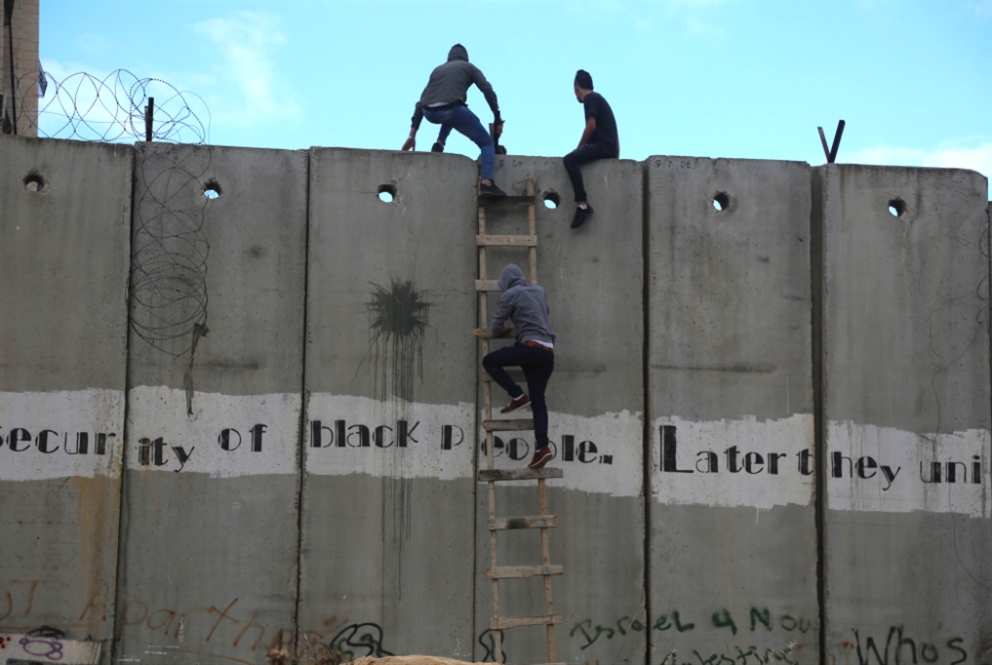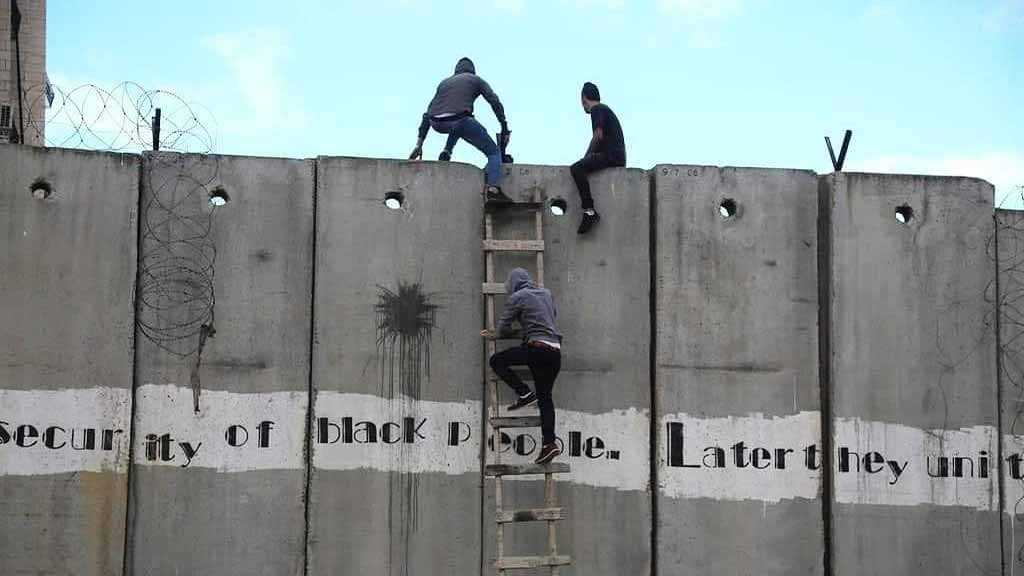Arab inaction towards the Nakba [the Catastrophe] in Palestine and all that has happened and continues to happen to its people is not diminished by other international factors. In talking about these international factors one should not ignore the Zionist project. This conversation is an attempt to shed light on the political aspects of the Palestinian cause and to show that the origins of what Palestine has suffered and is suffering from date back to colonial policies that embraced and supported the Zionist movement and “Israel”. This also confirms that Palestine is the main arena of conflict between the Arab peoples and the forces of international colonialism with the “Israeli” entity being one of its most important tools in its hegemonic project over the region.
Taking a quick glance at events over the last century, it is noted that the most important stages in the Palestinian cause and the overall Arab-“Israeli” conflict were the product of international developments. These affected the land of Palestine and its surroundings, beginning with the First World War that produced the Balfour Declaration and leading all the way to Donald Trump’s promise that aims to persuade the Palestinian people to grant legitimacy to the occupation. From the very first moment that the Zionist movement crystallized, its founder, Theodor Herzl, realized that its project would not see the light of day without an international embrace. This embrace would not materialize without a functional role in the interests of global colonial politics. Against this backdrop, Herzl made his initial efforts to secure this embrace. He made international calls that included Britain, Germany and the Ottoman Empire. In the end, the Zionist project became reality only after it was formally adopted by Great Britain and the Balfour Declaration during the First World War.
The Zionist project in Palestine was based on three pillars: land control, immigration and building institutions. None of the three elements could have been achieved without the British and the international embrace. It provided the umbrella for Jewish immigration that flowed into Palestine. This led to a new demographic reality in the form of infrastructure for the implementation of the Zionist project. The occupation itself provided the conditions for control over the land that formed the space on which the settlements were built. Under this control, institutions were built in the Yishuv stage [settling prior to the establishment of the “state”] that formed the nucleus of “Israel’s” existence. At a later stage, the [United Nations] Partition Plan [Resolution 181] came in 1947 to provide an international cover to transform the Zionist colony in Palestine into a Jewish “state”. The international resolution gave the Zionists a “state” on 55% of Palestine. It soon expanded in the context of the 1948 war to include 78% of the country.
But despite these developments, the demographic composition of Palestine in 1948 did not allow for the success of the Zionist project, since the proportion of Jews after successive waves of immigration during the previous decades [650 thousand] was about one third of the population of Palestine. From here, the displacement was not an incidental result of the confrontation that took place, but rather a stand-alone goal, without which the “Israeli” entity would not have been established on the land of Palestine. Now, more than 70 years after the displacement, the Zionist project is still facing the challenge of having half of the Palestinian people remaining in their homeland. Meanwhile, the enemy is continuing with its settlement annexation, which precedes and paves the way for the legal annexation. In total, it appears that 82% of the historic land of Palestine is now owned by Jews, or rather territories controlled by “Israel”.
The new international plan targeting the Palestinian cause at this stage bears the title “Deal of the Century”. The deal again raises the issue of the Partition Plan in 1947. Some would argue that if the Palestinians had accepted the plan back then they would not be facing what they are facing now. It is an attempt to say that not being realistic 70 years ago lead to the Oslo Accords and the Deal of the Century. The latter puts them back to face the same challenges. But the truth, which is ignored or overlooked by some, is that the Zionist movement adopted the policy of stages to implement its project. This is confirmed by the historical course of the Zionist movement since its founding in 1897. It was explained by the founder of “Israel” and its first Prime Minister, David Ben-Gurion, in a famous letter to his son Amos some 10 years before the Partition Plan [5/10/1937]. He said in the letter, “It definitely does not hurt my feelings [regesh] that a state is established, even if it is small. Of course the partition of the country gives me no pleasure. My assumption [which is why I am a fervent proponent of a state, even though it is now linked to partition] is that a Jewish ‘state’ on only part of the land is not the end but the beginning.”
Ben-Gurion explains the Zionist plan to transform the Jewish “state” on a part of Palestinian land into a launch pad for further expansion.
“We shall admit into the ‘state’ all the Jews we can. We shall organize an advanced defense force—a superior army which I have no doubt will be one of the best armies in the world. At that point I am confident that we would not fail in settling in the remaining parts of the country, through agreement and understanding with our Arab neighbors, or through some other means,” Ben-Gurion wrote.
As such, it is clear that the Palestinian and Arab approval for the partition resolution would have not been able to save the rest of Palestine or prevent the Nakba, which had no alternative because of the nature of the Zionist project and its objectives. On the contrary, it would have given Palestinian legitimacy to the “Israeli” entity. Historical experience has also proven that the issue of the Zionist entity’s legitimacy or the lack thereof is a very important issue in the conflict.
On the other hand, those who drafted the partition resolution were aware that it would not solve the problem and could not be implemented even if the Palestinians and the Arabs accepted it. The reason is clear. The Zionist entity cannot be established on 55% of Palestine’s landscape as stipulated in the resolution when the Palestinian population on that area is almost equal to the number of the Jewish settlers there. Also, the ownership of the lands held by Palestinians in that part may exceed 90%. If we examine the Zionist position, it did not accept the partition decision, but accepted that it guarantees the establishment of the Jewish “state”. The Zionists also prepared their military plans to expand the “state”, which happened later and quickly.
One of the most important achievements of the Palestinian rejectionist position since then is keeping the Palestinian cause alive, despite the horrors and conspiracies that targeted it. If the Palestinians had accepted the partition resolution, they would have given legitimacy to a racist colonial entity over half their homeland. In addition, their acceptance would have facilitated Zionist aspirations to establish a homeland on all of Palestine more quickly and less costly then what happened later. Some, ignorantly or deliberately, confuse issues by saying that the refraction that followed is not because of the rejectionist position, but for other reasons related to the management of the conflict in its subsequent stages. However, what became clearer is that the failure of the resistance in a certain arena and at a certain time against the “Israeli” entity was not the result of a wrong choice made by the resistance. The evidence is that it has recorded historical and strategic achievements in other arenas and stages.
As in all stages of the conflict, the Palestinian people have been and still are at the center of the international schemes and Arab conspiracies because they were and still are the dam standing in front of the defeated and the traitors who are waiting for the appropriate historical moment to move to the stage of a public alliance with the Zionist entity. The Deal of the Century is seeking to achieve at this historic stage what has failed over the past decades. But at a time when “Israel” is confused and restricted in the face of 2% of Palestinian land – the Gaza Strip – the Palestinian people will not accept what they have refused during the Nakba.

كان الشعب الفلسطيني ولا يزال السدّ أمام المنهزمين والخونة الذين يترصدون الانتقال إلى التحالف العلني مع الكيان الصهيوني
لا يُقلِّل الحديث عن العامل الدولي في نكبة فلسطين وتهجير شعبها وقيام إسرائيل، من أهمية عامل التخاذل العربي في كلّ ما جرى، ولا يزال، على شعب فلسطين. كذلك فإنه لا يعني تجاهلاً للمشروع الصهيوني القائم بذاته، بقدر ما هو محاولة لتسليط الضوء على جانب أساسي من هذه القضية، وتظهير حقيقة أن منشأ كلّ ما عانته وتعانيه فلسطين يعود إلى السياسات الاستعمارية التي احتضنت ودعمت الحركة الصهيونية وإسرائيل، وهو ما يؤكد أن فلسطين هي أيضاً ساحة الاشتباك الرئيسة بين الشعوب العربية وقوى الاستعمار الدولي، التي يشكل الكيان الإسرائيلي إحدى أهم أدواتها في مشروع هيمنتها على المنطقة.

وبنظرة خاطفة إلى أحداث القرن الماضي، يُلحظ أن أهم المحطات التي مرت بها قضية فلسطين ومجمل الصراع العربي ـــ الإسرائيلي كانت بفعل تطورات دولية تركت مفاعيلها على أرض فلسطين ومحيطها، بدءاً من الحرب العالمية الأولى التي أفرزت وعد بلفور، وصولاً إلى وعد دونالد ترامب الذي يهدف إلى انتزاع شرعنة الاحتلال من الشعب الفلسطيني. فمنذ اللحظات الأولى التي تبلورت فيها الحركة الصهيونية، أدرك مؤسسها تيودور هرتزل أن مشروعها لن يرى النور من دون احتضان دولي، وأن هذا الاحتضان لن يتبلور من دون دور وظيفي يؤديه لمصلحة السياسة الدولية ـــ الاستعمارية. على هذه الخلفية، وجّه هرتزل جهوده الأولى لانتزاع هذا الاحتضان، فأجرى اتصالات دولية شملت بريطانيا وألمانيا والدولة العثمانية… وفي نهاية المطاف، لم يأخذ المشروع الصهيوني طريقه إلى التحقق في الواقع إلا بعد تبنّيه رسمياً من قِبَل بريطانيا، ووعد آرثر بلفور، في سياق الحرب العالمية الأولى.
استند المشروع الصهيوني في فلسطين إلى ثلاث ركائز: السيطرة على الأرض، والهجرة، وبناء المؤسسات. ولم يكن لكل من العناصر الثلاثة أن يتحقق من دون الاحتضان الدولي ـــ البريطاني. فهو وفّر المظلة للهجرة اليهودية التي تدفقت للاستيطان في فلسطين، وأدى ذلك إلى بلورة واقع ديموغرافي شكّل البنية التحتية لتنفيذ المشروع الصهيوني. أما الاحتلال نفسه، فوفّر شرط السيطرة على الأرض التي شكلت الحيّز الذي أقيمت عليه المستوطنات. وفي ظلّه، بُنيَت المؤسسات في مرحلة «اليشوف» (الاستيطان ما قبل إقامة الدولة) التي شكلت النواة لقيام إسرائيل. وفي مرحلة لاحقة، أتى قرار التقسيم (181) عام 1947 ليوفر غطاءً دولياً كي يحوّل المستعمرة الصهيونية في فلسطين إلى كيان يهودي دولتي. ومنح القرار الدولي الصهاينة دولة على مساحة 55% من فلسطين، سرعان ما توسعت في سياق حرب 1948 بعد أشهر لتسيطر على 78% من البلد.
مع ذلك، التركيبة الديموغرافية لفلسطين في 1948 لم تكن تسمح بنجاح المشروع الصهيوني، انطلاقاً من أن نسبة اليهود كانت بعد موجات الهجرة المتتالية خلال العقود السابقة (650 ألفاً) تقارب ثلث سكان فلسطين. من هنا، لم تكن عمليات التهجير نتيجة عَرَضية للمواجهة التي حصلت، بل كانت هدفاً قائماً بذاته، ومن دونها لم يكن للكيان الإسرائيلي أن يقوم على أرض فلسطين. والآن، بعد مضي أكثر من 70 عاماً على عمليات التهجير، لا يزال المشروع الصهيوني يواجه تحدي وجود نصف الشعب الفلسطيني على أرض وطنه. في المقابل، يواصل العدو الضمّ الاستيطاني الزاحف، الذي يسبق ويمهّد للضم القانوني. وفي النتيجة الكلية، يظهر أن 82% من أرض فلسطين التاريخية يملكها الآن يهود، أو هي أراضٍ تسيطر عليها إسرائيل.
ما لم ينجح طوال عقود تسعى «صفقة القرن» إلى تحقيقه في هذه المرحلة
المخطط الدولي الجديد الذي يستهدف القضية الفلسطينية يحمل في هذه المرحلة عنوان «صفقة القرن»، وهو ما يطرح مجدداً إشكالية يروج لها البعض بأن الفلسطينيين لو وافقوا على قرار التقسيم في 1947، لما واجهوا ما يواجهونه الآن، في محاولة للقول إن عدم الواقعية قبل أكثر من 70 عاماً أوصلت إلى «أوسلو» ثم إلى «صفقة القرن»، وهو ما يضعهم مجدداً أمام التحدي نفسه. لكن الحقيقة التي يتجاهلها أو يغفل عنها البعض، أنّ الحركة الصهيونية اعتمدت سياسة المراحل في سبيل تنفيذ مشروعها. أمرٌ يؤكده المسار التاريخي للحركة الصهيونية منذ تأسيسها عام 1897، وأوضحه مؤسس إسرائيل وأول رئيس وزراء لها ديفيد بن غوريون، وعبّر عن ذلك في رسالة مشهورة له إلى ابنه عاموس قبل نحو عشر سنوات من قرار التقسيم (5/10/1937)، يقول فيها: «لا أشعر إطلاقاً بالإهانة بإقامة دولة يهودية حتى لو كانت صغيرة، أنا بالتأكيد لا أرغب في تقسيم الأرض… أنا متحمس جداً لإقامة الدولة ــــ حتى إن كانت تلزمنا الآن الموافقة على التقسيم ــــ لأنني أرى أن الدولة اليهودية المنقوصة ليست النهاية، وبل هي البداية».
ويوضح بن غوريون الخطة الصهيونية في تحويل الدولة اليهودية على جزء من أرض فلسطين إلى منطلق للسيطرة على كاملها، بالقول: «سنحشد في الدولة أكبر عدد ممكن من اليهود… لا أشك في أن جيشنا سيكون واحداً من أكثر الجيوش تميزاً في العالم، وعندئذ أنا متأكد أنه ما من شيء سيمنعنا من الاستيطان في كل الأجزاء الباقية من الأرض، إما من طريق الاتفاق والتفاهم المتبادل مع جيراننا العرب، وإما بطرق أخرى». هكذا، يتضح على نحو ملموس أن الموافقة الفلسطينية والعربية على قرار التقسيم لم تكن لتنقذ ما بقي من فلسطين، أو تحول دون النكبة التي لم يكن هناك بديل منها بسبب طبيعة المشروع الصهيوني وأهدافه، بل كانت ستعطي شرعية فلسطينية للكيان الإسرائيلي. كذلك أثبتت التجربة التاريخية أن مسألة «شرعية» الكيان الصهيوني أو عدمها مسألة في غاية الأهمية في الصراع.
من زاوية أخرى، الذين صاغوا قرار التقسيم كانوا يدركون أنه لن يحلّ المشكلة، بل لم يكن قابلاً للتنفيذ حتى لو قبله الفلسطينيون والعرب. والسبب بكل وضوح أنه لا يمكن إقامة الكيان الصهيوني على 55% من مساحة فلسطين وفق ما نصّ عليه القرار، فيما عدد سكان تلك المساحة من الفلسطينيين يكاد يعادل عدد سكانها من اليهود، وملكية الأرض التي بحوزة الفلسطينيين في ذلك الجزء قد تزيد على 90%… وإذا ما دققنا في الموقف الصهيوني، فهو لم يقبل قرار التقسيم، وإنما قبل ما تضمنه من إقامة الدولة اليهودية. وبشكل موازٍ، أعدّ الصهاينة خططهم العسكرية لتوسيع نطاق الدولة، وهو ما حدث لاحقاً وسريعاً.
من أهم ما حققه موقف الرفض الفلسطيني منذ ذلك الحين إبقاء القضية الفلسطينية حيّة طوال هذا الوقت، على رغم الأهوال والمؤامرات التي استهدفتها. ولو وافق الفلسطينيون على قرار التقسيم، لكانوا منحوا الشرعية لكيان استعماري استيطاني عنصري على أكثر من نصف وطنهم، إضافة إلى أن قبولهم كان سيسهّل تحقيق الأطماع الصهيونية في إقامة وطنٍ على كل فلسطين بسرعة أكبر وثمن أقل مما حدث فيما بعد. والبعض يخلط جاهلاً أو متعمداً بالقول إن الانكسارات التي توالت ليست بسبب موقف الرفض، بل لأسباب أخرى ترتبط بإدارة الصراع في المراحل التي تلت. وهو ما بات أكثر وضوحاً في أن فشل المقاومة في ساحة من الساحات، وفي مرحلة زمنية معينة ضد كيان العدو، لم يكن نتيجة خطأ خيار المقاومة، والدليل أنها حققت إنجازات تاريخية واستراتيجية في ساحات ومراحل أخرى.
وكما الحال في كل مراحل الصراع، كان ولا يزال الشعب الفلسطيني محور المخططات الدولية والتآمر «العربي»، لأنه كان وما زال السدّ أمام المنهزمين والخونة الذين يترصدون اللحظة التاريخية الملائمة للانتقال إلى مرحلة التحالف العلني مع الكيان الصهيوني. وما لم ينجح طوال العقود السابقة، في هذا السياق، تسعى «صفقة القرن» إلى تحقيقه في هذه المرحلة التاريخية، لكن ما لم يقبله الشعب الفلسطيني في نكبته، لن يُسلّم به في الوقت الذي تقف فيه إسرائيل مربكة ومقيّدة أمام أقلّ من 2% من مساحة فلسطين: قطاع غزة.
River to Sea Uprooted Palestinian
Uprooted Palestinian 



 Uprooted Palestinian
Uprooted Palestinian 











No comments:
Post a Comment